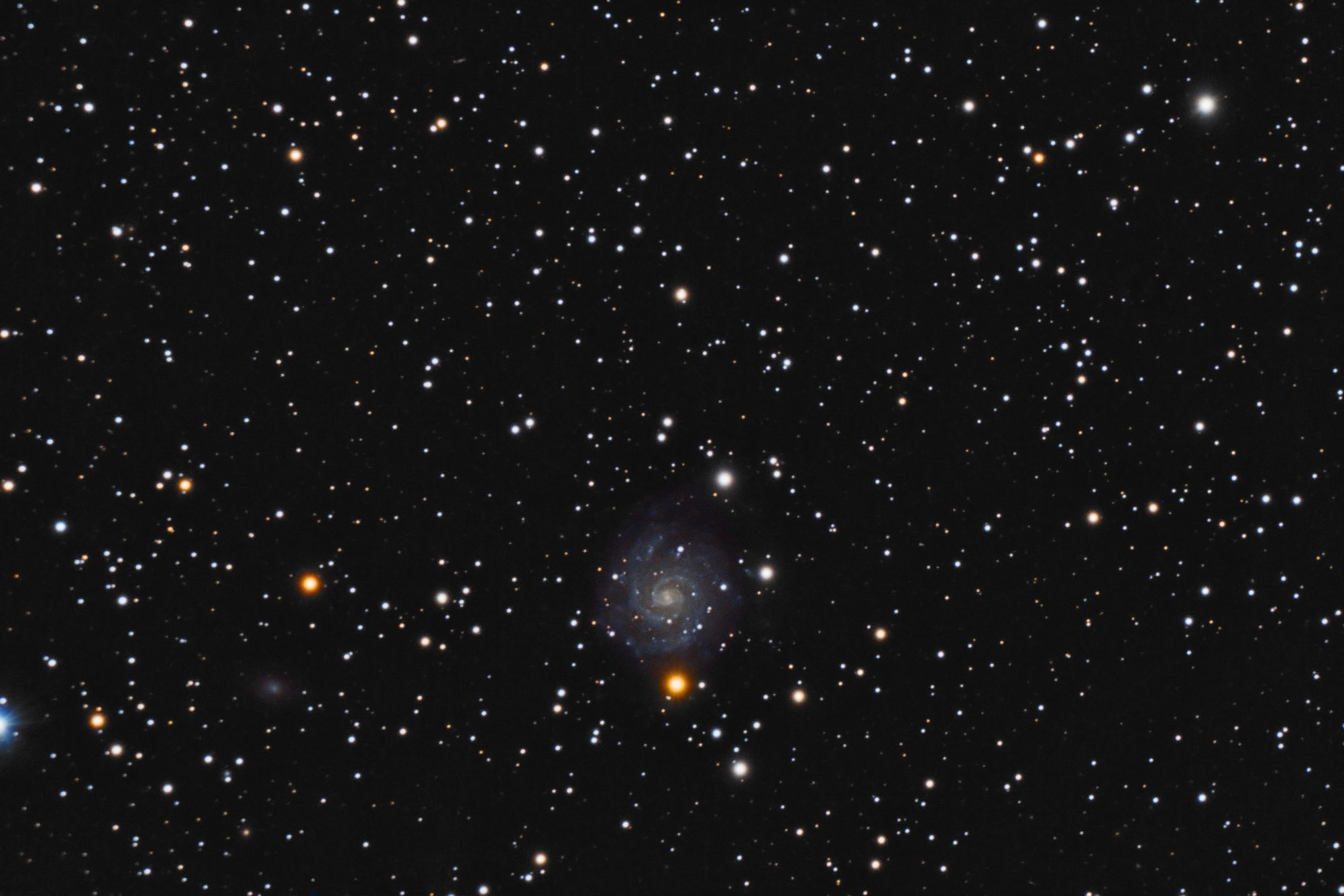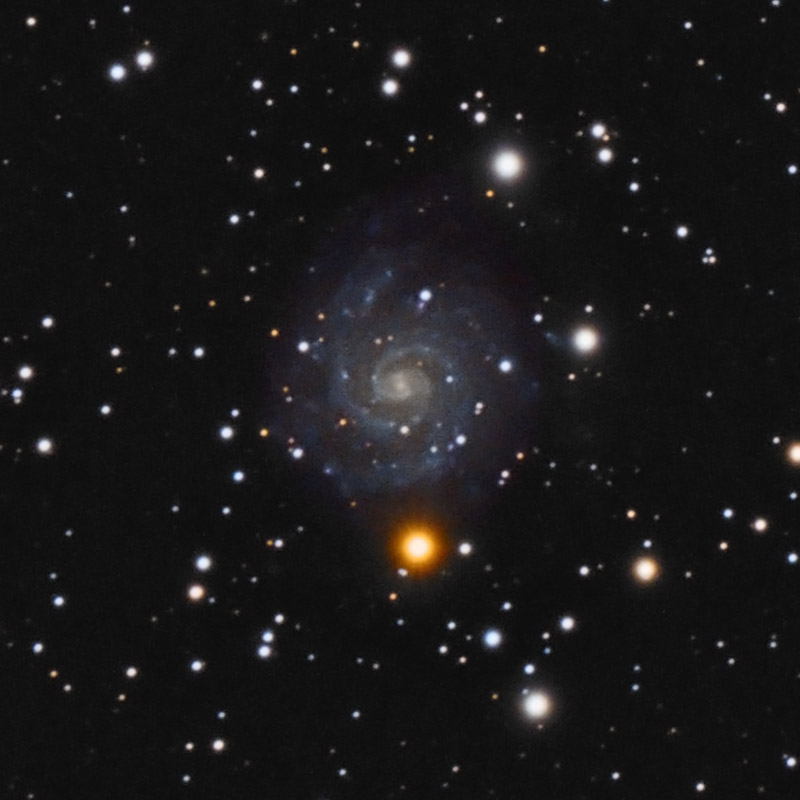| Description | Images |
Object name: IC0239Designation(s): IC0239, IC 239 is a low surface brightness spiral that is considered part of the NGC 1023 group. NGC 1023 is Arp 135 and is located about 45 minutes of arc east of IC 239. It is located in far eastern Andromeda while NGC 1023 is in Perseus. The distance to both is highly controversial. As a member of the 1023 group, it should be at approximately the same distance. When I took Arp 135 back in October of 2008 I put it at 20 million light-years. That isn't likely correct. While current distance estimates for Arp 135 seem to collect around 32 to 34 million light-years values down to the 20 million light-years I used and up to 64 million light-years are found in the reasonably current literature. I'll go with 32 million light-years simply because that is also the redshift value for IC 239. Using that distance the separation of IC 239 from Arp 135 is only 430,000 light-years so it is possible that IC 239 is feeling the tidal forces of the far more massive Arp 135. Indeed it shows faint extended arms or plumes to the north and south. Attempts to get a Tully-Fisher distance estimate are bugged by not being able to determine exactly how face on we are seeing it. Two different methods of determining this give two very different answers. With so many uncertainties it is possible, but unlikely the two aren't related. My post about NGC 1023/Arp 135 with its likely too close distance estimate can be seen here. Related Designation(s):2MASS J02362781+3858090, 2MASX J02362783+3858085, CGCG 0233.3+3845, CGCG 523-071, HDCE 0155 NED004, IC 0239, IC0239, IRAS 02333+3845, ISOSS J02364+3856, LDCE 0160 NED011, LGG 070:[G93] 002, MCG +06-06-065, NGC 1023 GROUP:[TT2009] 08, PGC 009899, UGC 02080, USGC U139 NED07, UZC J023627.8+385806, [BTW2003] J0236+3857, [SLK2004] 0322, |

